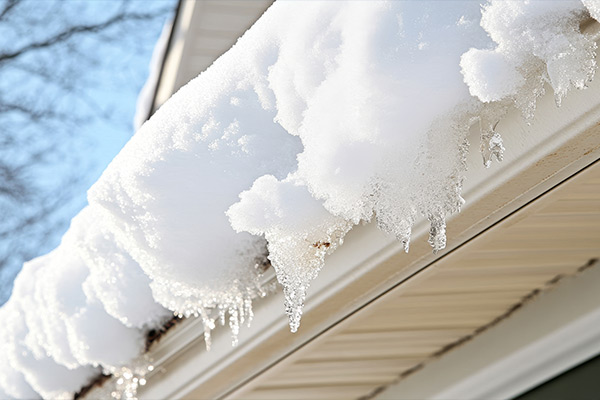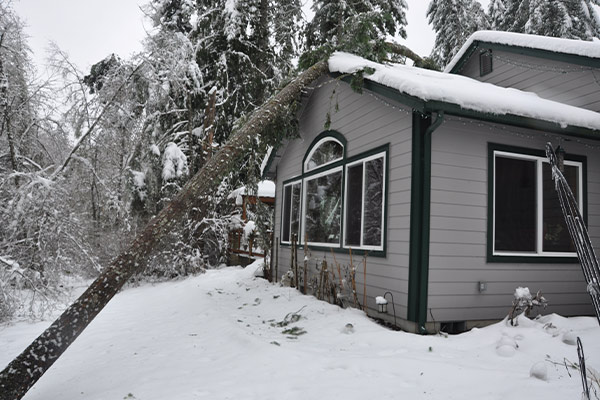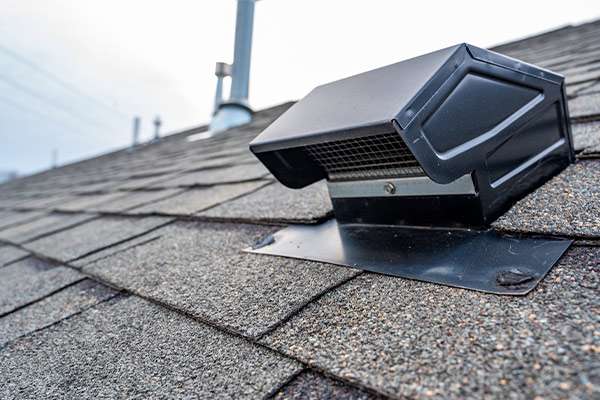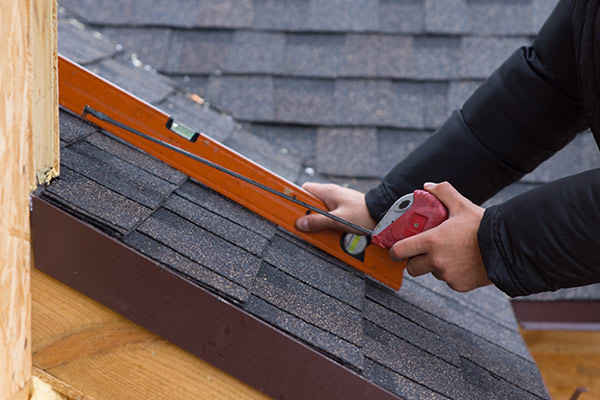Table of Contents
ToggleIce dams might look harmless, but they can wreak havoc on your home. These icy buildups form when snow on your roof melts during the day and refreezes at night, creating a barrier that traps water. Over time, this water can seep under shingles, causing damage to your attic, ceilings, walls, and even your belongings. If left unchecked, ice dams can lead to costly repairs and long-term issues. The good news? Preventing ice dams is simpler than you might think.
By keeping your roof at a consistent temperature, you can stop the melting-freezing cycle that causes them. With proper ventilation, insulation, and sealing air leaks, you can protect your home from this winter headache. A little preparation goes a long way in keeping your roof safe and your home cozy all season long.
What Are Ice Dams?
Ice dams form on roofs when snow melts and refreezes, creating a barrier that prevents proper water drainage. This process typically occurs in winter when daytime temperatures cause snow to melt, and cooler evening temperatures refreeze the water at the roof’s colder edges, like eaves or soffits.
As the ice builds up, it blocks melting snow from draining, forcing water back under shingles and causing potential roof damage. This water can seep into the attic, damaging ceilings, walls, and insulation. Left unnoticed, ice dams may lead to costly issues like structural rot, mold, and compromised interior surfaces.
Warm air leaking from your home is the primary cause of ice dams. Heat escaping into the attic raises the roof’s temperature, melting snow even in freezing outdoor conditions. The melted water flows down to colder sections of the roof and refreezes, creating these hazardous barriers.
Recognizing the signs of ice dams is essential for effective ice dam prevention. Common indicators include icicles hanging from the roof’s edge and water stains on interior ceilings or walls. Understanding this phenomenon supports better winter roof maintenance strategies.
Causes of Ice Dams
Ice dams form when specific conditions on your roof and within your home create an environment for snow to melt and refreeze. Understanding these factors is crucial for effective ice dam prevention.
Roof Surface Temperature Differences
Uneven roof surface temperatures play a significant role in ice dam formation. If the upper section of your roof is warm enough to melt snow while the eaves remain cold, melted water flows to the colder edge and refreezes. This happens frequently in winter climates with snow accumulation. The eaves stay colder because they extend beyond the house’s heated areas, maintaining lower temperatures. This temperature imbalance leads to an ice barrier that disrupts proper drainage and traps water on your roof, potentially causing roof damage repair needs.
Attic Heat Loss
Heat escaping from your attic contributes significantly to ice dam formation. Poor insulation and inadequate sealing allow warm air to rise from your home’s interior into the attic, raising the roof’s temperature. This heat melts the snow on the roof, starting the cycle. Common sources of attic heat loss include gaps around recessed lights, chimneys, and exhaust vents. In some cases, exhaust systems for kitchens or bathrooms increase attic temperatures, especially if they terminate close to the roof. Addressing these heat sources with improved insulation and sealing helps with both ice dam prevention and overall winter roof maintenance.
Problems Caused by Ice Dams
Ice dams can result in significant issues for your home, impacting both its structural integrity and interior comfort. Recognizing these problems is essential for effective winter roof maintenance.
Roof Damage Repair
Heavy ice dams add considerable weight to roof eaves, potentially compromising their structure. Severe cases may even lead to roof cave-ins, requiring costly roof damage repair. If ice dams break free, they can tear off shingles, gutters, and harm anything below.
Water Intrusion
Trapped meltwater can infiltrate under shingles, seeping into your attic and insulation. This can damage ceilings, walls, and floors, with repairs adding to your expenses. Prolonged water exposure contributes to structural rot, mold, and mildew growth, which jeopardize your home’s safety and longevity.
Heat Loss in Your Home
Leaking water reduces insulation effectiveness, lowering your home’s R-value. Inefficient insulation forces you to use more energy for heating, increasing utility costs. Preventing ice dams minimizes these heating inefficiencies to keep your home energy-efficient.
Risk to Gutters and Paint
Accumulated ice may damage gutters by pulling them away from the roof. Exterior paint can crack and peel as moisture penetrates the outer walls. These issues can lead to further deterioration if left unaddressed.
Identifying these problems early and addressing them promptly ensures ice dam prevention measures are in place, protecting your home from additional damage.
How to Prevent Ice Dams
Ice dam prevention focuses on maintaining a consistent roof temperature to avoid conditions that cause ice formation. Effective steps can protect your home from costly damages during winter.
Improve Insulation
Upgrade your attic insulation to an R-value of about R40 to minimize heat loss from your home’s interior. Building codes recommend 12-14 inches of fiberglass or cellulose insulation. If you have less than 8 inches and have experienced ice dam issues, adding more insulation helps regulate the roof’s temperature and reduces the risk of ice dams.
Seal Attic Air Leaks
Identify and seal air leaks that warm your roof’s underside. Look at gaps around recessed lights, chimneys, ductwork, and vent pipes. Use firestop sealants, foam caulking, and other sealing materials to plug leaks effectively. Blackened insulation or light shining through indicates heat escape points.
Stopping these leaks not only supports ice dam prevention but also improves energy efficiency.
Ensure Proper Ventilation
Ensure proper attic ventilation with ridge and soffit vents to keep attic air cold. Cold air reduces the roof’s surface temperature, minimizing freeze-thaw cycles. Balance intake and exhaust vents for optimal airflow. Consult a professional if adjusting or adding roof vents is necessary for winter roof maintenance.
Use Heat Cables
Install heat cables along your roof’s edge to prevent ice buildup in areas prone to dams. Heat cables melt snow and ice, maintaining water flow off your roof. Ensure proper installation following the manufacturer’s instructions to avoid roof damage repair or inefficiency. While not a long-term fix, heat cables provide an immediate solution to minimize risks.
How to Remove Existing Ice Dams
Removing ice dams requires safe and efficient techniques to prevent further roof damage and minimize risks. Use the following methods to manage existing ice dams effectively.
Use a Roof Rake
A roof rake is a key tool for roof snow removal after a snowfall. With a long-handled aluminum rake equipped with wheels, you can carefully pull fresh snow off the roof, reducing the chance of ice dam formation. Focus on clearing at least the lower 4 feet of the roof edge to prevent snow from melting and refreezing at the eaves.
Avoid climbing onto the roof in winter, as it poses safety hazards. Always apply light pressure to prevent shingle damage during this process.
Apply Cold Air
Directing cold air to the underside of the roof can freeze active leaks temporarily. If water from an ice dam is seeping into your home, use a box fan in the attic to aim cold air at the affected area. This approach halts water flow by freezing the meltwater, buying you time to address the root cause.
Temporary Fixes
Temporary solutions, like creating a channel for water to flow off the roof, can help mitigate damage. Fill the leg of old pantyhose with calcium chloride or an ice melt product and lay it across the ice dam, ensuring it overhangs the gutter. This method gradually melts the blockage without cracking shingles.
Alternatively, use an extension ladder to gently chip away small sections of ice to create a drainage path, avoiding excessive force that could harm your roof.
These methods work as immediate solutions to manage ice dams during winter emergencies, complementing long-term ice dam prevention and winter roof maintenance strategies.
Long-Term Solutions for Ice Dams
Consistent roof temperature helps prevent ice dams and avoids costly roof damage repair during winter. Addressing insulation, ventilation, and air sealing ensures effective and lasting prevention.
Upgrading Insulation and Sealing
Enhancing attic insulation reduces heat loss and helps maintain a colder roof temperature, critical for ice dam prevention. Aim for an insulation R-value of R40, with 12-14 inches of fiberglass or cellulose recommended by building codes. Properly insulating ductwork and providing sealed IC-rated recessed lights also prevents warm air from reaching the roof’s underside.
Sealing attic air leaks stops heat from escaping into the attic and contributing to uneven roof temperatures. Focus on gaps around chimneys, exhaust vents, light fixtures, and vent pipes. Use firestop sealants for safe sealing and apply mastic or foil-faced fiberglass to insulate ductwork. Thorough sealing and insulation help maintain consistent indoor warmth while improving winter roof maintenance.
Professional Assessment and Fixes
Hiring professionals ensures comprehensive solutions for ice dam prevention. Certified contractors use diagnostic tools to identify hidden air leaks and insulation issues throughout your home. They seal air gaps and upgrade insulation, creating conditions to maintain a balanced roof temperature.
Professionals also inspect attic ventilation to ensure proper airflow. Adding or improving soffit and ridge vents minimizes freeze-thaw cycles and reduces the likelihood of future ice dams. A professional approach eliminates underlying issues, providing reliable and long-term results for winter roof maintenance and home protection.
Roofs R Us in Blaine, MN Can Help with Ice Dams
Protecting your home from ice dams doesn’t have to be overwhelming. With the right preventive measures and professional guidance, you can safeguard your roof and avoid costly repairs. Roofs R Us in Blaine, MN specializes in addressing ice dam issues and offers expert solutions tailored to your home’s needs.
Whether you’re looking to upgrade insulation, seal air leaks, or improve ventilation, their team has the experience to ensure your roof stays in top shape all winter long. Don’t let ice dams compromise your home’s safety—reach out to Roofs R Us today for reliable, effective support.
